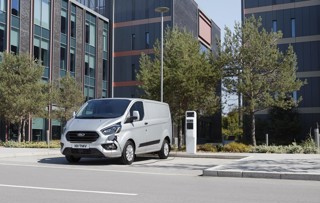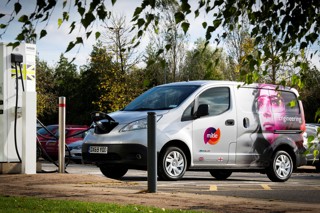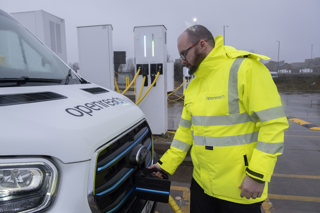Openreach is trialling the Ford Transit Custom plug-in hybrid (PHEV) to determine whether the powertrain technology will suit its day-to-day operations while driving forward its green ambition.
The digital network business has welcomed six Transit Custom PHEVs to its fleet, which have been converted and provided by Rivus Fleet Solutions.
Gary Harrison, head of Engineering at Rivus, said: “The hybrid option from Ford is particularly interesting because we’ve seen the technology work for domestic use and now we’re learning for the first time about how it performs in the tougher world of commercial use.
“We had one of the few prototypes of the Transit Custom PHEV and tested it for two weeks before making the decision that it would be a good fit for Openreach. The motor industry is currently going through the biggest change since the introduction of the internal combustion and it’s really exciting to be at the forefront of applying this change to the commercial vehicle sector.”
The Transit Custom PHEV uses a 13.6 kWh battery to deliver a 35-mile zero-emission range, while the onboard 1.0-litre EcoBoost petrol engine can charge the battery on-demand to extend the range to more than 310 miles before refuelling is required.
The trial comes shortly after The UK Electric Fleets Coalition, of which Openreach is a founding member, released its policy asks to the Government, asking for a target to be set for 100% of new car and van sales to be fully electric by 2030 - with exceptions for the small number of vehicles where this may not be possible.
Clive Selley, Openreach CEO, added: “Openreach is leading the charge on the transition to electric vehicles. Our order today is an important first step as we begin to move our fleet, which is the second largest commercial fleet in the UK, to being fully electric.”
Ford recently introduced a new automatic electric mode for the Transit Custom PHEV, which uses geofencing to ensure the van operates with zero-emissions in cities.
Using live location data, the Transit Custom PHEV vans will automatically switch to electric drive mode whenever they enter predefined areas such as congestion and low‑emission zones.
Vehicle operators can also create custom “green zones” to encourage low-emission driving around locations such as schools, playgrounds and warehouses.





















Login to comment
Comments
No comments have been made yet.